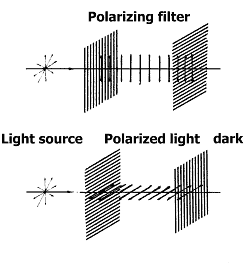Light Polarizing Filter

And this is the primary purpose of a polarizing filter.
Light polarizing filter. Linear polarizing filters were one of the first polarizing filters produced for film and manual cameras. Polarized light filters reduce glare from reflective surfaces. Polarizing filters produce their best results when they re 90 from the sun. Since reflections tend to be at least partially linearly polarized a linear polarizer can be used to change the balance of the light in the photograph.
The most popular type of polarizing filter is circular to fit easily on the end of almost any lens containing a free spinning element for quick adjustment. The polarizing filter works it s magic with a linear polarizing film that filters out the scattered light rays and allowing only the light that moves in a linear direction. Filtered light will appear slightly darker than natural light. With the use of a circular polarizing filter cpl on your lens you can enhance the colors in the sky as well as the elements in your frame.
A polarizing filter transmits only the component of the wave parallel to its axis reducing the intensity of any light not polarized parallel to its axis. Polarization filters are specially adapted glass that when turned at an angle to a light source will reduce glare from reflected surfaces. But you need to be careful when taking a photo of a wide angle scene as the sky s polarization isn t even. For modern cameras a circular polarizer is typically use.
B w circular polarizer kaesemann xtra slim mount xs pro htc 16 layers multi resistant and nano coating photography filter 77 mm 4 5 out of 5 stars 1 353 103 95 103. Only the component of the em wave parallel to the axis of a filter is passed. Without getting too technical a polarizer filters light into a single plane. This is a great way to get the best from your filter.
Because there is now polarized light mixed in with non polarized light we can separate out the single plane polarized light with a polarizing filter. A polarizing filter or polarising filter is often placed in front of the camera lens in photography in order to darken skies manage reflections or suppress glare from the surface of lakes or the sea. Also known as lighting gels. The rotational orientation of the filter is adjusted for the preferred artistic effect.
This is made possible as the cpl filter when rotated at a particular angle minimizes the haze in the sky and enhances the color by reducing the polarization effect caused by sunlight. The polarizing filter features a dichroic absorbing layer sandwiched between two layers of glass. This reduces reflections in your photos.














































